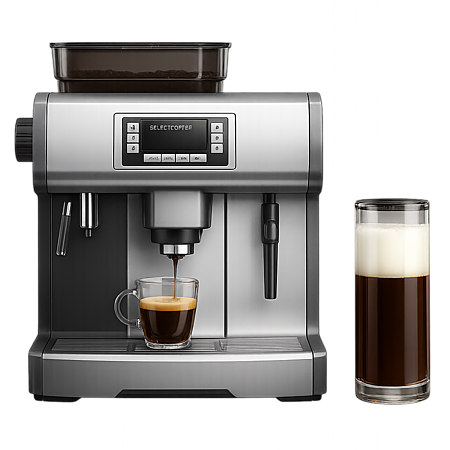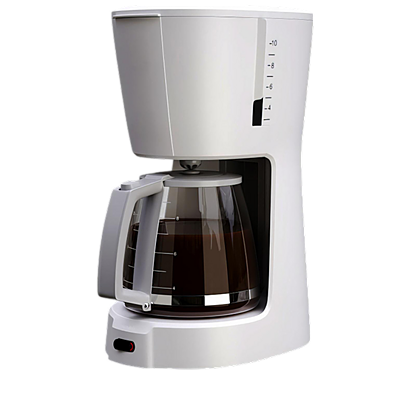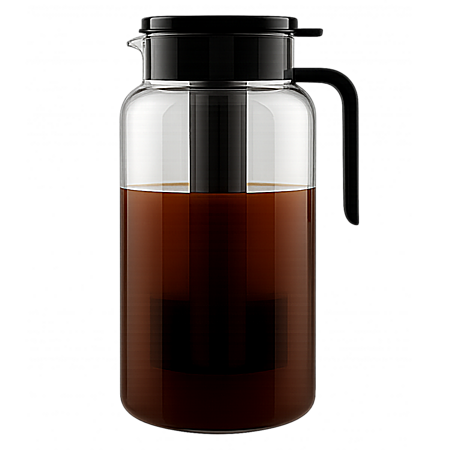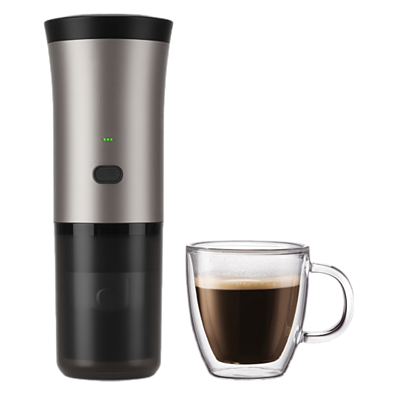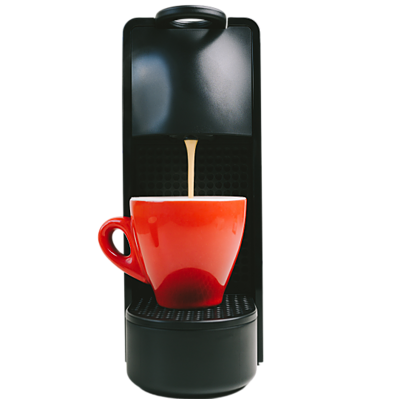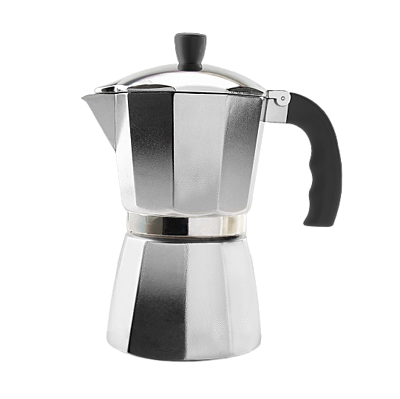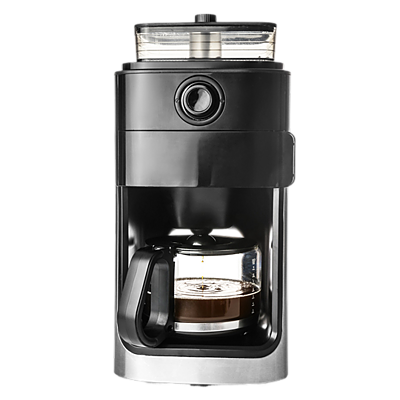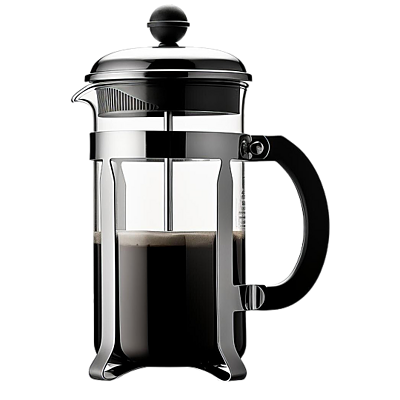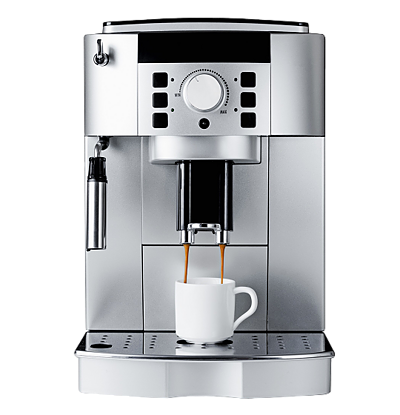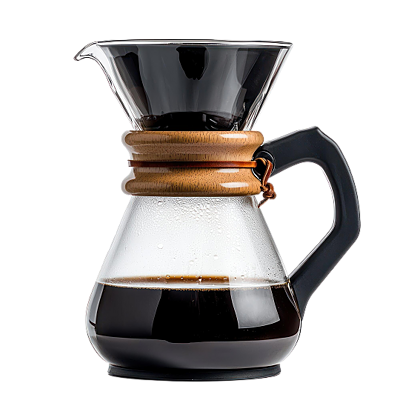Cold brew coffee makers aren’t just for sweltering summer sips. They’re for coffee lovers who value smooth, low-acid flavor and a concentrate you can customize with milk, water, ice or any flavoring you choose. Cold brew coffee makers let home brewers easily craft café-quality coffee concentrate without an elaborate setup, or using the stove.
If you’re new to home cold brew, it’s important to understand variables that affect cold brew flavor like steep time, filtration quality, and brew strength. In this guide, I’ll cover cold brew coffee maker features so you can find a system that suits your brewing style, kitchen space, and flavor preferences. And, if you’re interested in reading more about coffee machines in general and reviewing the different brands on the market, see my main buyer’s guide.
What to Look For When Buying a Cold Brew Coffee Maker
Brew Method & Steeping Time
Immersion-style cold brew coffee makers are the most common and affordable purpose-built brewers. They automate the traditional cold brew method by combining a container, filter system, and sometimes a dispensing tap. Look for clear steeping guidelines. Quality brewers recommend a 12–18 hour steep. Avoid models that suggest vague or overly short brew times.
Make sure that the machine has strong seals and is made of good materials. Airtight lids preserve freshness, and durable plastic or glass construction helps maintain flavor quality and prevent staining.
Electric cold brew coffee makers, on the other hand, use rapid-extraction methods like agitation, circulation, or vacuum pressure to produce cold brew in under an hour. They’re ideal if you want same-day cold brew with minimal effort.
Look for minimum 20+ minute brew cycles. Products with very short cycles often deliver cold coffee, not true cold brew. Machines that brew in the 25–45 minute range usually strike the best balance between speed and flavor.
Some electric brewers include a chilling phase or are designed to dispense directly into a cup or pitcher, so that’s something you should consider as well.
These are best for convenience-first buyers. You won’t get the depth of a slow-steeped brew, but you will get drinkable results quickly—especially from mid- and high-end models that allow more control over extraction.
Filter Type & Clarity
Filters separate grounds from coffee and affect sediment levels. Mesh filters are reusable and eco-friendly but may let some sediment through. Fine metal or paper filters give cleaner brews but require more upkeep or replacement.
Avoid tapered or conical filters in wide pitchers, unless the unit includes a secure holder. Poor alignment often results in bypass (when water flows around the grounds instead of through them), reducing brew strength and clarity.
If you like ultra-smooth, sediment-free cold brew, you should look for brewers with double filtration systems or those compatible with paper filters.
A good filter should extend through most of the brew chamber to allow for even extraction. Filters that are too short or narrow can leave grounds floating outside the basket or create uneven steeping. Standard mesh is often sufficient for casual brewing, but for better clarity, look for filters labeled “micro-mesh” or “fine mesh.” These reduce sediment without switching to disposable filters.
And if you do get these, make sure that they’re dishwasher safe, since they will be harder to clean. Choose filters with smooth welds and minimal seams, which are easier to rinse and less likely to develop buildup.
Some immersion brewers and many electric models now support optional paper filters (flat-bottom or cone-style), giving you flexibility to fine-tune your brew clarity. Look for this compatibility in the product specs if you value a sediment-free cup.
Capacity & Batch Size
Think about how much coffee you drink. Home brewers range from 16 oz to 1 gallon or more. Most immersion cold brew systems make a concentrate that’s meant to be diluted 1:1 with water, milk, or ice. That means a 32 oz batch of concentrate can yield about 64 oz of drinkable coffee. If you drink cold brew daily, even a mid-sized brewer (around 32–48 oz) may only last a few days.
When choosing a size:
- 16–24 oz brewers are best for light or occasional drinkers. They’re often personal brewers or bottle-style systems that brew and store in the same container.
- 32–48 oz brewers work well for 1–2 people, offering enough concentrate to last 2–3 days. These are ideal for most users who want fresh batches without too much storage.
- 64 oz to 1 gallon brewers are suited for households with multiple coffee drinkers, or anyone who likes to prep once a week. They often include heavy-duty filters and spouts for easy dispensing.
Also consider fridge space. Tall or wide brewers may not fit on narrow shelves. Some models are designed with low profiles or upright handles to store easily in door compartments or side shelves.
Tip: If you make cold brew to use in different ways—like lattes, iced coffees, or with added flavors—larger brewers give you more flexibility to portion out and customize each cup. Just make sure it seals well to prevent flavor loss or fridge odors.
Ease of Use & Cleanup
Cold brew is meant to be simple, but poorly designed brewers can turn daily prep and cleanup into a hassle. Design choices—like how easy it is to insert or remove the filter, how well the carafe pours, and whether it can go in the dishwasher—have a big impact on how often you’ll actually use the brewer.
Wide openings, removable filters, dishwasher-safe parts, and spouts for easy pouring make daily use easier.
These features reduce friction in the three key stages of use: setup, brewing, and cleanup. For example, a wide-mouth carafe allows you to easily add grounds and water without spilling. Removable filters let you discard used grounds without reaching into tight spaces. And dishwasher-safe components reduce the effort needed to maintain the brewer after each batch.
Look for:
- Removable filters – Easier to clean and refill, especially if they sit low in the brewer. Stainless steel mesh is best for durability.
- Non-slip bases – Keeps the brewer stable during stirring or pouring, especially when full.
- Dishwasher-safe carafes and lids – Speeds up cleanup and helps prevent flavor buildup or staining over time.
- Leak-proof lids or seals – Especially important for horizontal fridge storage or when shaking to mix. Prevents spills and keeps the brew fresh longer.
- Integrated spouts or dispensing taps – Helpful in large-batch brewers; makes pouring mess-free and avoids removing lids multiple times.
Avoid:
- Narrow openings – Harder to add grounds, clean, or reach the bottom of the carafe. May also make it difficult to fit standard kitchen tools or brushes inside.
- Fragile plastic parts – Thin plastic lids or filter components can warp or crack after just a few washes or fridge cycles.
- Setups that take a lot of assembly – Multi-part designs may look sleek but often require disassembly after every use, increasing cleanup time and risk of losing small pieces.
Material & Build Quality
The material of a cold brew maker affects not just how it looks, but how it performs day-to-day. Although they look premium, glass carafes don’t retain flavors and break easily. BPA-free plastic is lightweight but can retain odors. Stainless steel is durable and often insulated but heavier and pricier. Choose based on use: glass for style/storage, plastic for portability, stainless steel for durability.
Glass
- Pros: Non-reactive and won’t hold onto flavors or odors. It’s also visually appealing—ideal for open storage or serving guests.
- Cons: Fragile and more likely to crack or shatter if dropped or exposed to sudden temperature changes. Not ideal for travel or shared spaces where it may get bumped.
Best for: Home users who value appearance and want to store cold brew in the fridge for several days without affecting taste.
BPA-Free Plastic
- Pros: Lightweight and travel-friendly. Won’t break easily, even with frequent handling. Often more affordable.
- Cons: Some plastics may absorb coffee oils or fridge odors over time, especially if not cleaned regularly. Can discolor or warp if exposed to hot water.
Best for: Daily cold brew drinkers who prioritize portability, ease of use, and a lower price point.
Stainless Steel
- Pros: Very durable and typically well-insulated—ideal for keeping cold brew chilled longer outside the fridge. Doesn’t absorb odors and resists staining.
- Cons: Heavier than plastic or glass. Usually more expensive. Most models are opaque, so it’s harder to see how much coffee is left without opening the lid.
Best for: Heavy-use environments, shared households, or anyone looking for long-term durability. Great for those who want to take cold brew on the go or brew outdoors.
If you’re storing cold brew for several days, non-porous materials like glass and stainless steel will better preserve flavor and prevent off-notes. But if you need something more portable or kid-safe, plastic is more practical—just clean it promptly to avoid lingering smells.
Portability & Storage
Compact designs fit tight fridge space. Tight lids prevent leaks. Some brewers double as travel mugs for on-the-go convenience.
Cold Brew Coffee Maker Types
The right cold brew system for you varies depending on the time you have available, how involved you want to be, and if you’re making one batch or several for the week. There are models that let you have complete control over brew strength and steep time, and others that focus on simplicity and speed.
Manual Cold Brew Makers (French Press, Mason Jar, Burr, etc.)
Best for: Coffee enthusiasts who want a ritual and the ability to play around with strength and clarity
Pros:
- Ultimate control over steep time, ratio, and grind
Cons:
- Requires planning, and sometimes trial and error
Manual brewers are the most popular and inexpensive option. You have complete control over the ratio, steep time, and grind size. These are best for coffee fanatics who like to dial in the flavor, and don’t mind waiting for 12–24 hours for a batch to finish.
Automatic Cold Brew Machines
Best for: Those who want cold brew on demand, and don’t want to wait overnight for a batch
Pros:
- Fast brewing (5–45 minutes)
- Easy
Cons:
- Higher cost
- Less batch flexibility
Automatic cold brew machines usually use agitation, vacuum pressure, or circulation methods to accelerate the extraction. Though they can’t match the clarity of a 24-hour cold brew, they are a great way to get a flavorful, same-day cold brew.
Slow-Drip (Dutch or Kyoto Style)
Best for: Visual impact and nuanced flavor. Home cafés or serious coffee connoisseurs who want to make a show-stopping brew
Pros:
- Stunning machines
- Smoother clarity
Cons:
- Expensive
- Delicate, labor-intensive setup
Dutch or Kyoto style cold brew methods (popularized by Chashitsu) are a way to cold brew in vertical towers. The water drips slowly (over 3–6 hours) over the grounds and the result is a supremely clean, highly aromatic cup of coffee. It looks stunning on a counter top and is a great conversation piece, but takes up a lot of space and requires patience.
Cold Brew Pods & Capsule Machines
Best for: Convenience lovers who want iced-style coffee in a pinch with no cleanup
Pros:
- Zero mess
- Very quick to use
Cons:
- Limited to flavors available in pods
- Higher overall cost
There are some newer machines (think Keurig or Bruvi) that sell cold brew-style pods. While it uses short brew times and chilled water to mimic the cold brew process, it isn’t technically steep and won’t have the same depth and mouthfeel as a traditional batch. A good option for a quick cold caffeine fix, but not a replacement for traditional brews.
Advanced Features Worth Considering
- Adjustable brew strength — Change the coffee-to-water ratio or steep time to customize boldness, clarity, and caffeine level.
- Built-in filter: Premium models include reusable mesh or fine stainless steel filters for clearer brews with minimal sediment. No paper filters needed.
- Programmable steep timer: Automates steeping or alerts you when the brew is ready, making it perfect for overnight or advance prep.
- Cold brew concentrate vs. ready-to-drink: Brew a strong concentrate to dilute later, or a ready-to-drink brew that requires no extra steps.
- App connectivity (smart models): Monitor steep time, adjust strength, and get brew notifications; ideal for commercial use or tech enthusiasts.
- Glass or shatterproof carafe: Choose stylish borosilicate glass or durable BPA-free plastic, great for kitchens with kids or risk of drops.
- Removable brewing chamber: Easily detach for cleaning, refilling, or storing grounds without disassembling the whole unit.
- Spigot or tap-style dispensers: Conveniently pour large batches directly from the fridge without lifting heavy carafes.
- Compact footprint & fridge compatibility: Look for designs that fit fridge doors or shelves to save space.
Budget Breakdown: What to Expect
The following is a general price range breakdown and tells you what kind of product you can expect to find within these ranges. Keep in mind, this is just a general overview and that there are always exceptions to the rule! These prices below exclude the grinder.
- $0–$30: Basic immersion kits like mason jars or plastic pitchers. Simple, but may lack durability or filtration quality.
- $30–$75: The sweet spot for most home brewers with integrated filters, spouts, and durable glass or BPA-free plastic. Dishwasher safe.
- $75–$150: Premium brewers with metal filters, larger capacity, and stylish designs. Some double as tea infusers.
- $150+: High-end or commercial-grade models with double filtration, stainless steel, adjustable flow, or cold brew towers. Suited for enthusiasts or small cafés.
Which Machine Matches Your Routine?
The right cold brew system comes down to three things: how much time you can dedicate, how much coffee you want to make, and how involved you want to be in the process.
- Busy schedule, minimal prep — Choose a small-batch immersion brewer you can set up in advance and store in the fridge. Look for one with a built-in tap or spout to make pouring quick and mess-free.
- Interested in hands-on brewing and flavor precision — Slow-drip cold brew towers give you control over water flow and extraction time, letting you fine-tune strength, clarity, and flavor. While they take longer, they produce a clean, nuanced brew with tea-like characteristics.
- Brewing for multiple people or prepping for the week — Choose a high-capacity system—at least 1 to 2 liters—with a durable filter and secure, leak-proof seal. These are ideal for batch brewing and make storing or serving easier when hosting or planning ahead.
- Limited storage or fridge space — Compact immersion brewers, like mason jar-style models or slim glass carafes, work well in small kitchens. To reduce grit and cloudiness, go for a design that supports fine mesh or paper filtration.
- Looking to experiment with flavors — Pick a system with a removable infuser basket. These let you add ingredients like cinnamon, orange peel, or chicory during brewing, without interfering with cleanup or filtration.
- Making cold brew for just one person — Personal cold brew bottles combine brewing and storage in one container. They’re ideal for single servings and convenient for commuting or daily use.


